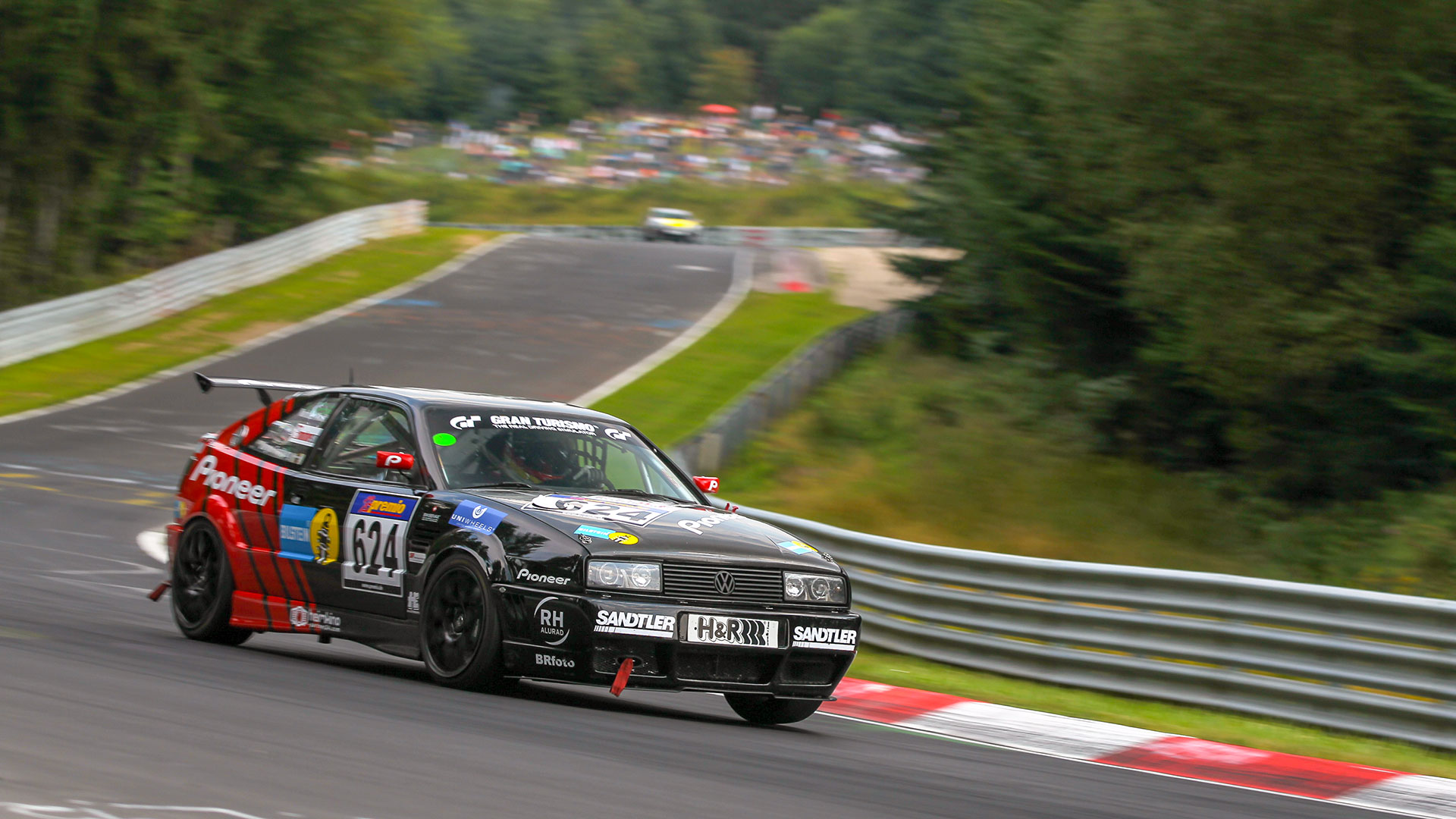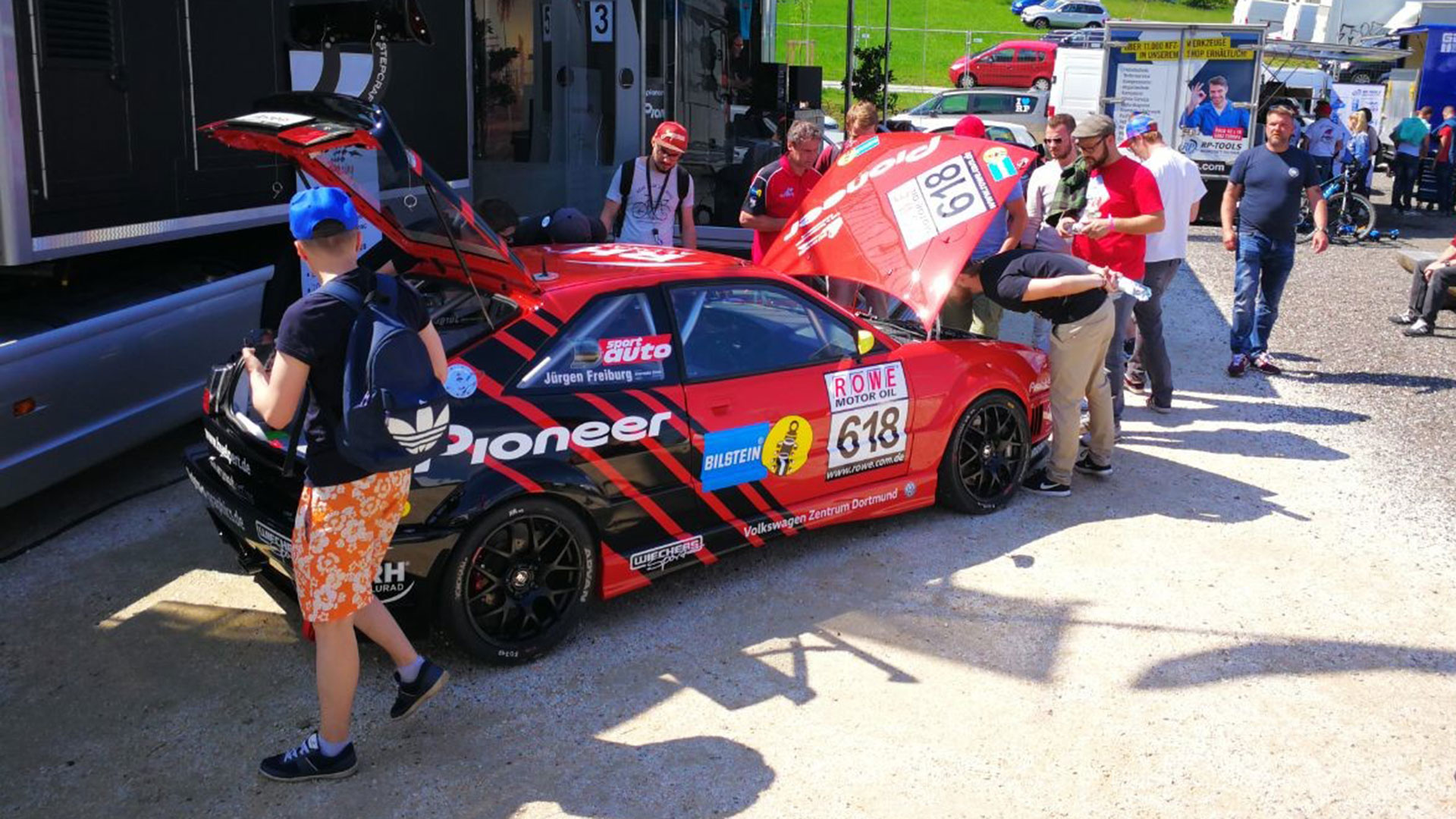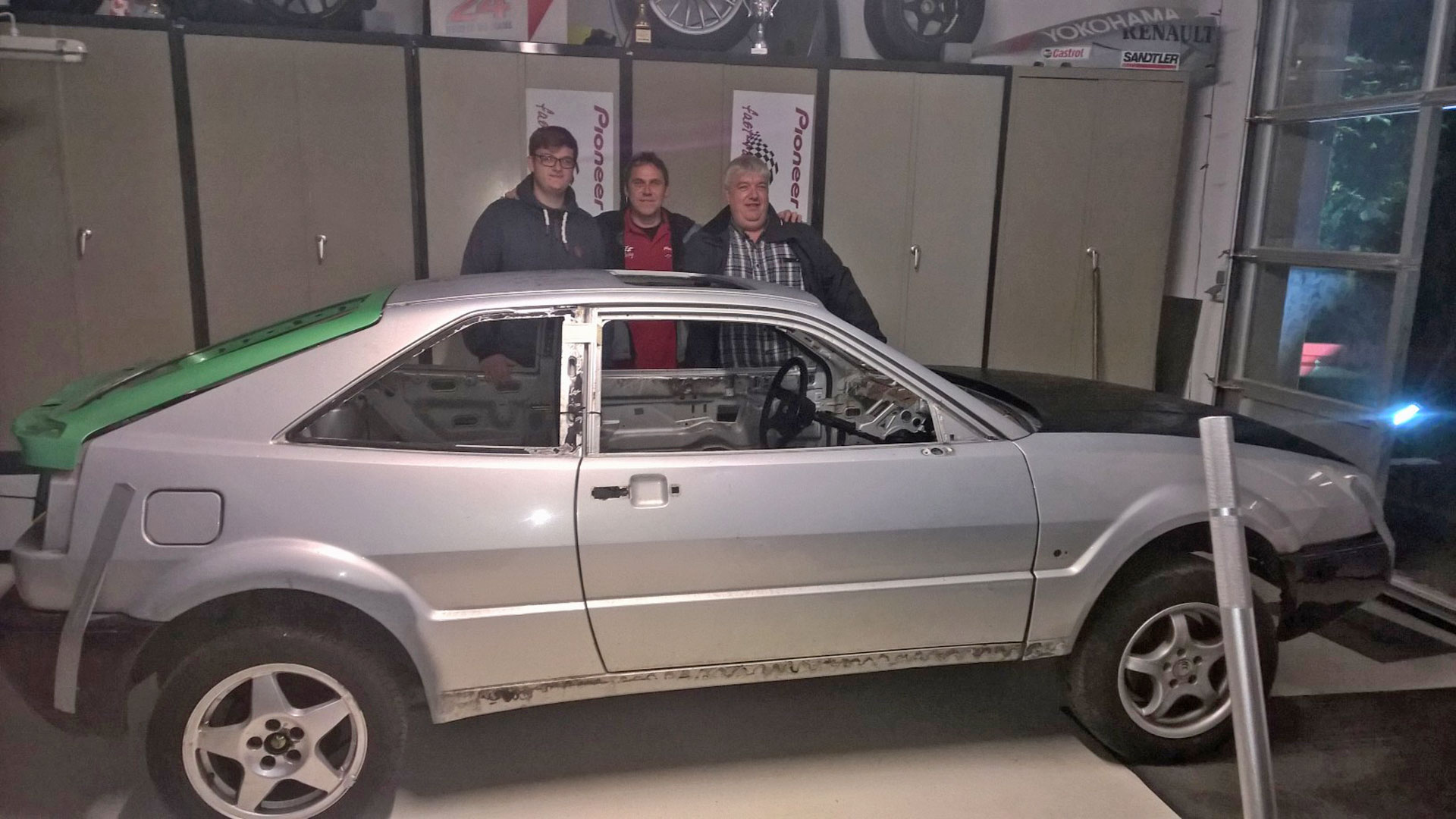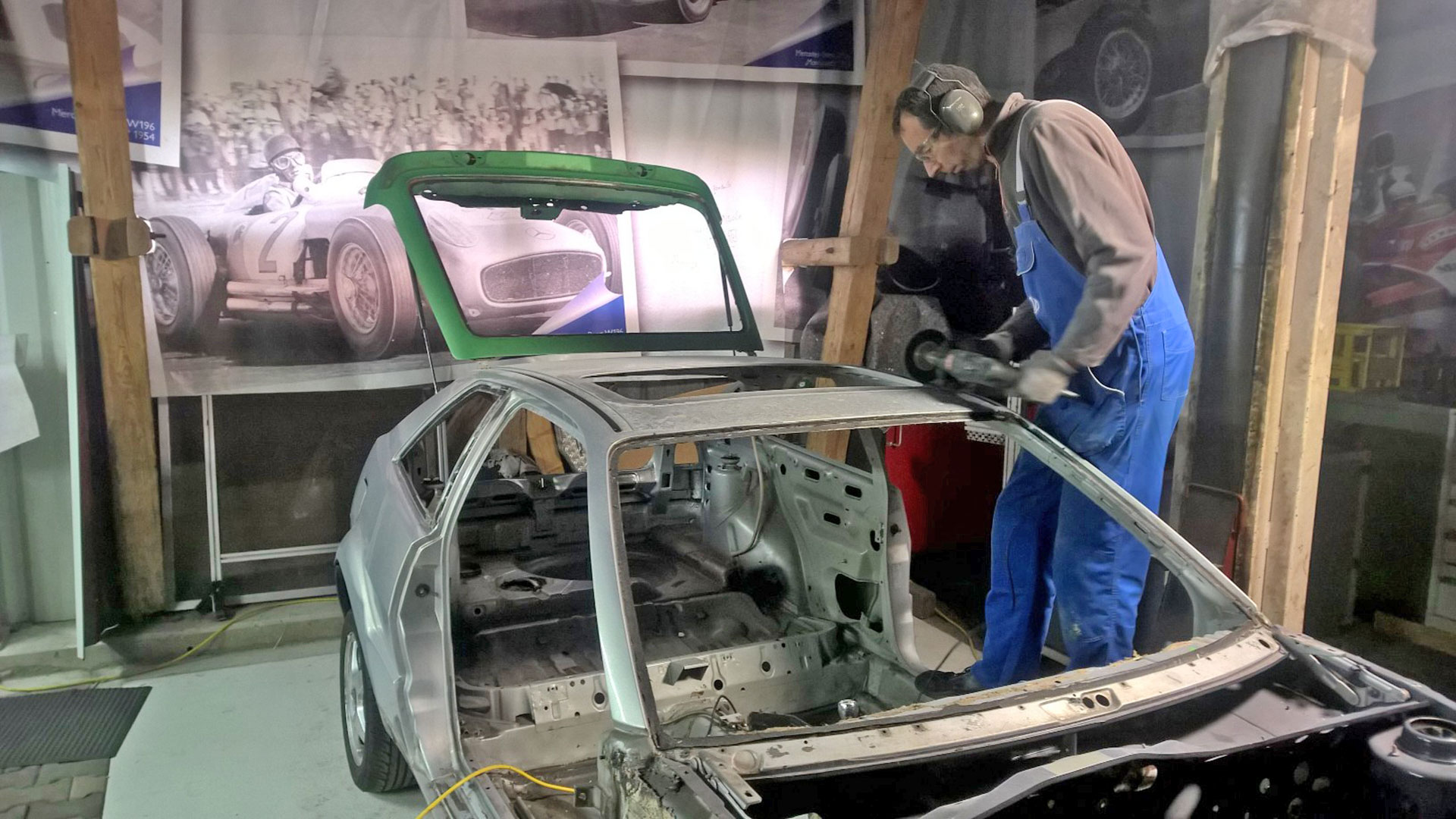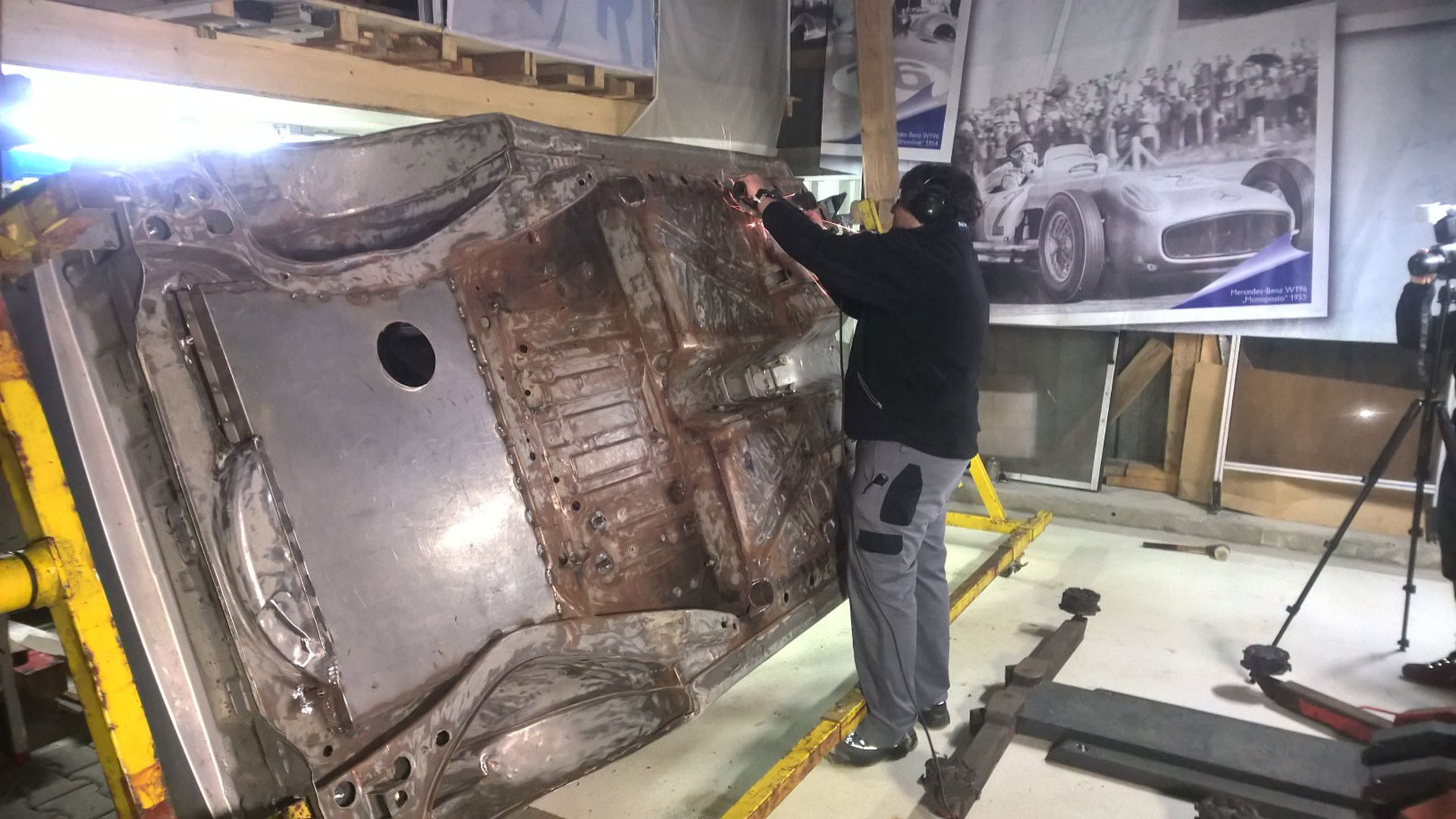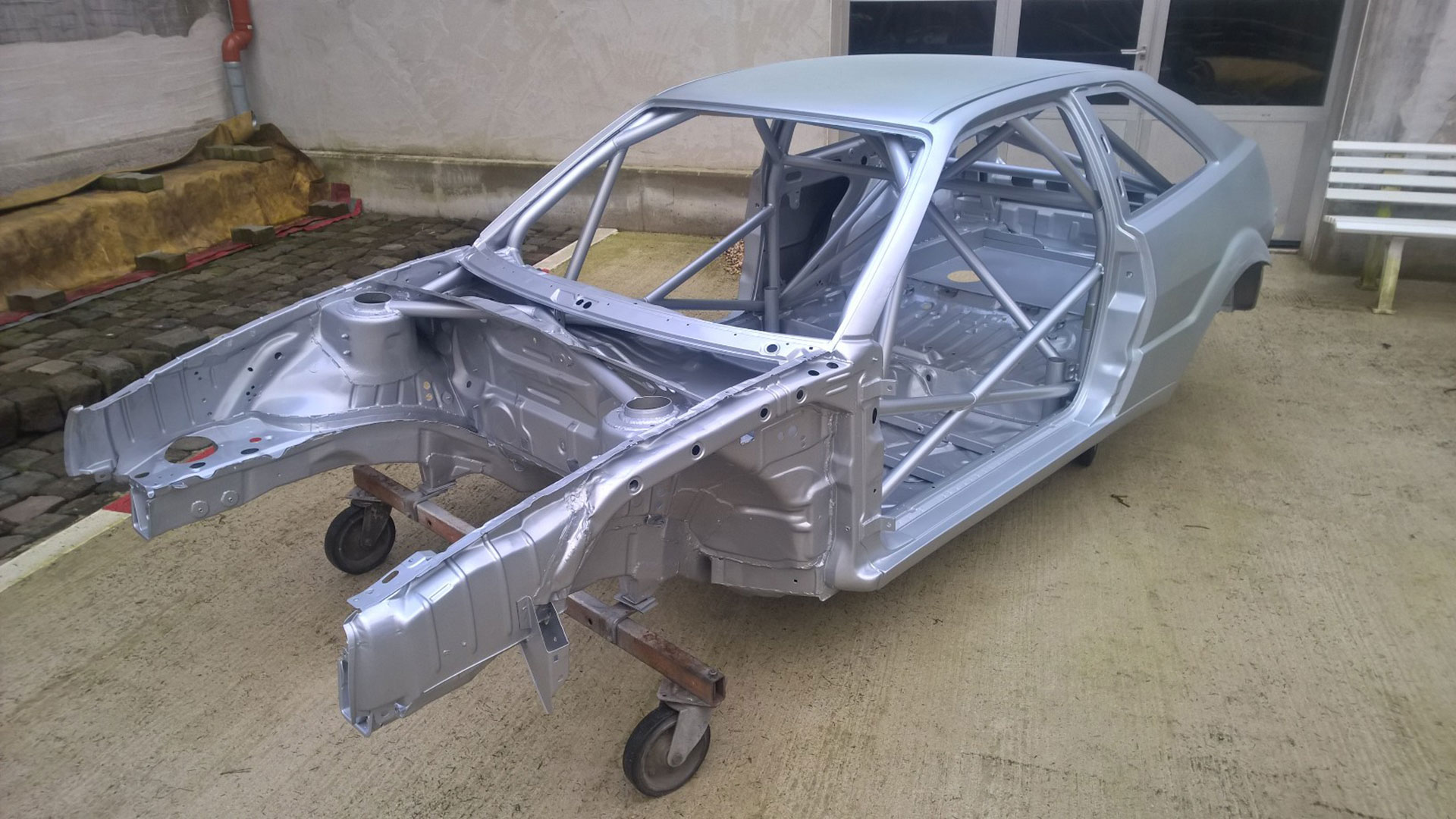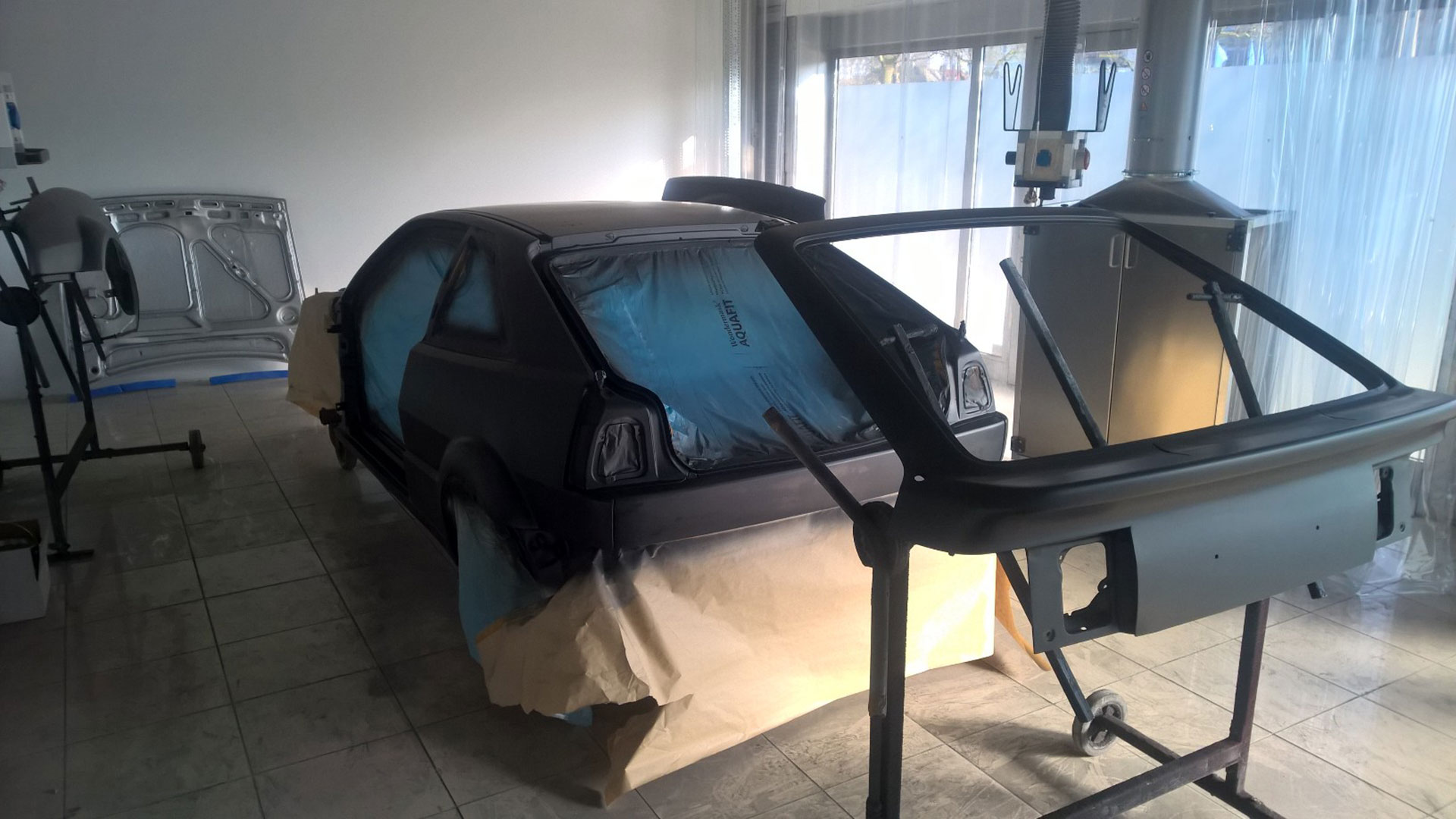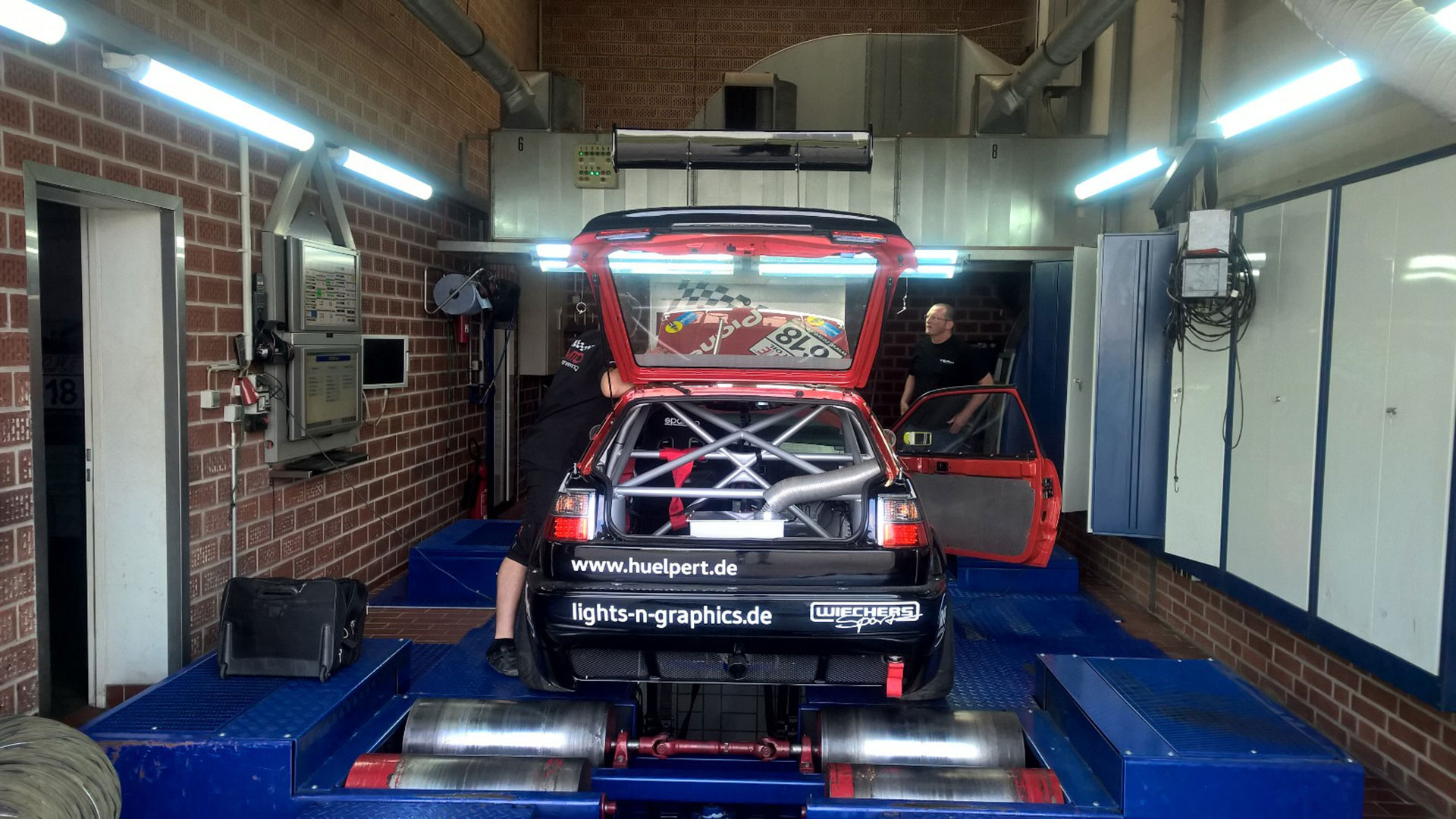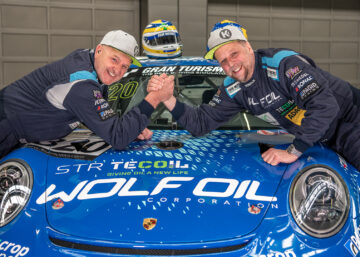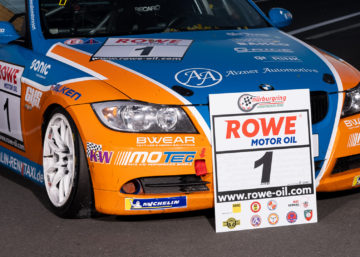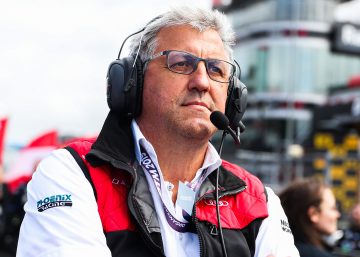It was a harsh blow for Jürgen Freiburg and Norbert Kraft. Last year, they suffered a serious accident at VLN race 7 and the VW Corrado of Pioneer Fast Racing was completely destroyed. The future of the team was called into question. The sponsors, though, were right away ready to assist the 51-years-old driver. Freiburg will now return at VLN race 3 with a new car. The North Rhine-Westphalian explained VLN.de in detail the stressful way from the blank body up to the fancy race car.
It was not an option for us to say we prefer to spend the winter lazy at home. I always saw the formation lap in my mind’s eye.
Interview with JürgenThe complete engine periphery was rebuilt. Only the gearbox, the shifting console and the engine, which was completely rebuilt in 2016, remained undamaged. A few other items, such as wire loom etc. were also updated to the state-of-the-art technology of electronics. First of all, the car was completely dismantled and the necessary parts were then polished blank. The joints were subsequently welded to make the body stiffer. In the beginning of November, the car then went to Wiechers-Sport in Nienburg where the safety cell was welded in. As scheduled, the car was redelivered 14 days later. The bodyshell, unpainted, was then fitted with all relevant parts. Chassis, body parts, axles and the engine were optimized before mounted.
In the beginning of January, the car was then transported to the company Humberg Powder-Coating in Münster. The bodywork was sandblasted and partially resprayed. “You call this electrostatic painting. In this process, the vehicle is not painted with a spraying gun just from the front, but the car is electrostatically charged and the paint particles move around and into each hole and corner. The complete underside, interior and engine compartment has already been painted in silver there”, explains Freiburg.
The remaining work was then undertaken in the workshop in the following week before the car was brought to the VW Center Dortmund where all the remaining parts were painted in black and red. The Corrado returned beginning of April and the rest was fully assembled. Four weeks later, on Friday the 4thof May, the car was presented to media representatives, again in Dortmund. On the same weekend, the car joined the VW meeting at the Wörthersee in Austria where is was exhibited at the Pioneer stand. “That was the point when we felt our first emotional reward”, says Freiburg.
The car was then gradually further prepared for race competitions. The suspension was adjusted at the Bilstein factory, track and camber were aligned and the axle components were synchronized. “We realized that the work during the winter had moved in the right direction. Everything could be adjusted the way it should be”, says Freiburg. Afterwards, they went to their engine partner to Osnabrück for test-bench measurements. “The engine had previously run for only five minutes in the workshop. As the electrical system was new and the new software had not yet been uploaded, we did not want to make a test drive”, says Freiburg. Just a small detail had to be readjusted. Then the first test drive was undertaken in Papenburg. “That was unbelievable for us. We drove back home and gave us a high five all the time.”
VLN driver Niklas Steinhaus who is normally competing in a Porsche Cayman, supported the team hereby. “He is an employee of Bilstein. I wanted to get another expert opinion. He said to me afterwards that driving the car is really great fun.” Then we had the inspection for the issue of the technical passport. And finally, the Corrado was finished two weeks ahead of schedule. It has now about 230 hp, 2-litres cylinder capacity, a six-speed gearbox, a H-shifting and a weight of about 1,020 kilograms. It is a bit lighter than the old one. It has a modern MDS Bilstein chassis which was specifically made for this car.
